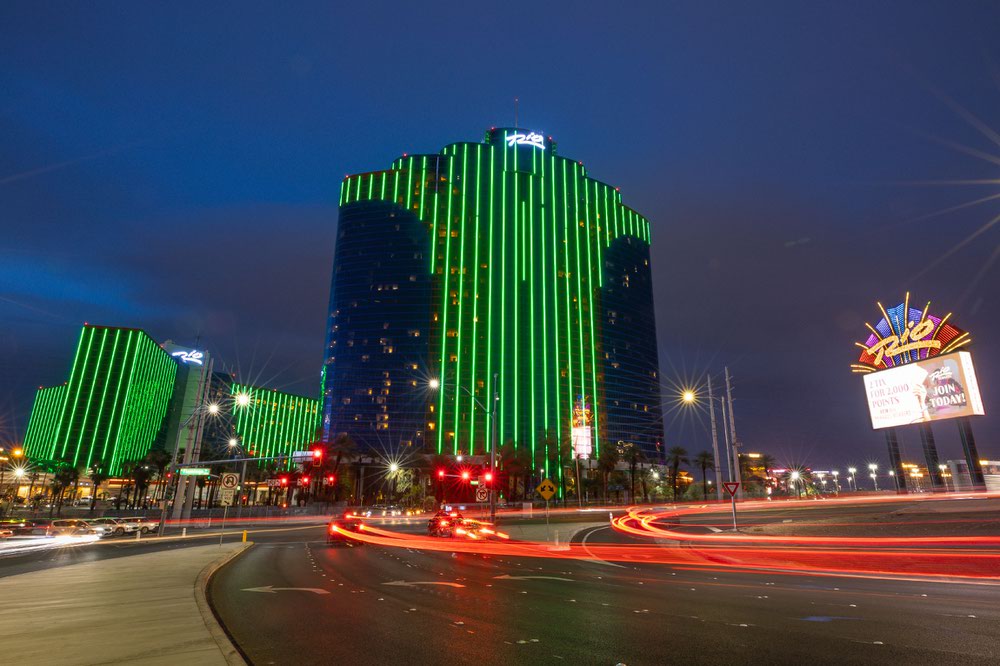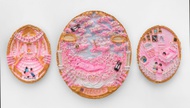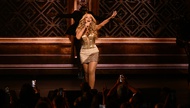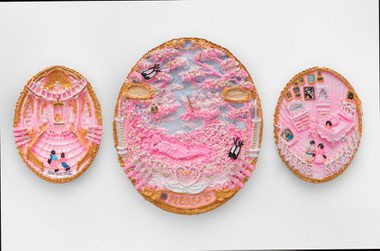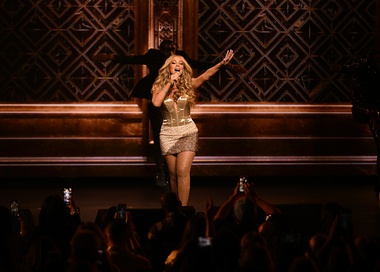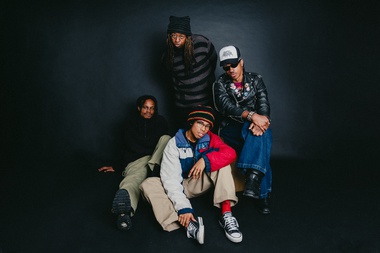Las Vegas is a young city, but it’s old enough to have eras. We’ve seen the coming and going of the Rat Pack era, the themed casino era and others, accumulating like rings on a tree. It’s likely that the era we’re living through now will be remembered as the “sports entertainment era,” or potentially, “the era Vegas ran out of housing and/or water.”
However, there’s a real possibility that we’ll remember this period as when Vegas’ casino towers became art, due to advances in LED lighting technology—and more significantly, because of evolving ideas of how that technology can be used. If old Vegas was defined by pillar signs practically dripping with neon and chaser bulbs, new Vegas is all about taking the relentless visual dynamism of those signs and putting it onto the buildings themselves.
“When you think of cyberpunk, futurism and all that Blade Runner-like stuff that was happening in the ‘70s and ‘80s, neon had been around for 50 years. And it was still cutting-edge,” says Brian Henry, a commercial designer who’s had a hand in creating much of the Strip’s LED signage. “For better or worse, LED is probably going to become that. It’s efficient, and buildings do need to have some sort of lighting to distinguish themselves. It just makes sense to use it. It’s beautiful, too.”
The Sphere is the big and obvious example of Vegas’ recent LED glow-up, but there have been other, more subtle changes in our skyline. Circa opened in 2020 with an enormous, hi-definition LED sign on one side of its 35-story tower and rippling LED light effects on the other. One entire face of the Resorts World tower is an LED sign clearly readable from miles away. Mandalay Bay and the Delano swapped out their horizontal gold neon strips for LEDs that can change color and display scrolling messages like “Happy New Year.”
And the Rio, halfway through a top-to-bottom refresh, replaced its failing red-and-blue neon with a lighting hardware package, supplied by light display firm ClearLED, that doesn’t stop at revitalizing the resort’s Ipanema and Masquerade towers. It recontextualizes them.
“We had always intended to replace what we had and keep the spirit of the Rio, so it wasn’t going to be an advertising board,” says Marty Millman, vice president of construction and development services at Dreamscape Companies, the new owner-operators of the Rio. “We always knew that we wanted to keep it non-representational.
“I am in Manhattan. We jaded New Yorkers will look at (the lighting of) the Empire State Building each night to see what’s going on—if there’s a message, or a show. It looks different; it keeps the interest going. That was kind of our model: We want people to look at the Rio again and again, even the people who are blind to it because they might have driven past it for 35 years.”
He describes exactly what happened to me one night on my commute home. Speeding past the Rio, I noticed that its always-red Ipanema tower was instead a cool blue. The following night, I pulled off the I-15 entirely to watch both towers rippling with the vibrant pastel colors of the Rio’s classic neon pillar sign. For the first time in a long time, I admired the curvy lines of the Masquerade tower. I could have been looking at a brand-new resort.
Applying color and light to Vegas’ resort towers is not a new idea. (Henry fondly remembers the “beautiful aqua” of Caesars Palace’s original tower: “I mean, that building was just stunning.”) But LED lighting hardware like the Rio’s offers endless changeability and granular detail—an inviting artist’s palette. And Millman, a longtime fan of a beloved jam band out of Burlington, Vermont, knew exactly which artist to invite.
“I’m a big Phish fan of 34 years or so,” Millman says. During the COVID shutdown, the band streamed their filmed concerts, and Millman noticed that during one of the more recent of those shows, Phish’s artistic lighting director Chris Kuroda—whose improvisational talents in painting with light inspired fans to name him an unofficial fifth member of the band, or “CK5” for short—had begun using lights arranged in linear patterns, similar to what the Rio was planning to do. It was an “aha moment” for Millman and Dreamscape, who promptly reached out to Kuroda.
“What we want is to put on a show,” Millman says. “We want authenticity. We want subtlety, to some degree. And we knew that he could program the lights from an artistic perspective, where it’s a gift to Las Vegas. … We knew we’d have some great new LED screens where we can tell everybody how great the Rio is and what our new offerings are. But we wanted the facade to be noticed.”
A couple of years post-COVID, Kuroda, Millman and Kuroda’s design associate Andrew Giffin camped out in one of the Rio’s Palazzo suites over the period of a week, from 8 p.m. to 4 a.m. nightly, programming the Rio’s lights on the spot. Kuroda and Giffin created a piece of software that allowed them to design the sequences pixel by pixel.
“I think there’s about 60 looks. We’ve got 10-minute looks that are slow and evolving, and then every 10 minutes there’s something a little bit more exciting that happens fast and speeds up,” Millman says. “They also designed programming to randomize how that’s all selected, so no two nights are going to be the same.”
The Rio’s Phish-adjacent lighting should debut soon. (Testing of the sequences is ongoing at the time of this writing, and Millman says that Kuroda, now on tour with the band, continues to send new ideas.) But as exciting as that sounds, it’s only half as exciting as what it represents in the long term. Rio and Sphere could mark the beginning of a new Vegas—one with the candy-colored skyline of a Tokyo or Hong Kong, a Vegas where buildings begin to tell their stories long before you’re close enough to read their signage. If we’re to live in Blade Runner times, with the threat of dystopia looming, this new era should at least be pleasing to the eye.
“There’s things that I miss and things I wish we could revisit, but those times are past,” Henry says. “I love neon. I think it’s a beautiful thing (and) the people that made it were artisans and craftsmen, like mad scientists. … But we have to move forward. (LED lights) are improving, and I think that there’s a lot that LEDs and controlled lighting brings to Vegas.”
Click HERE to subscribe for free to the Weekly Fix, the digital edition of Las Vegas Weekly! Stay up to date with the latest on Las Vegas concerts, shows, restaurants, bars and more, sent directly to your inbox!
